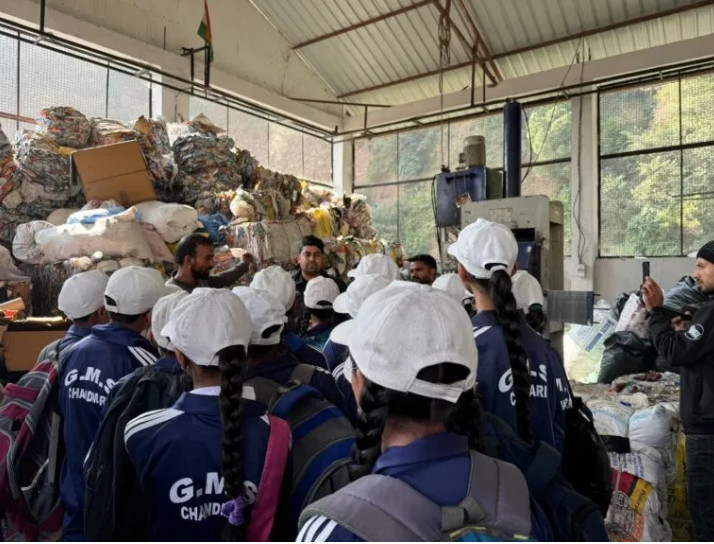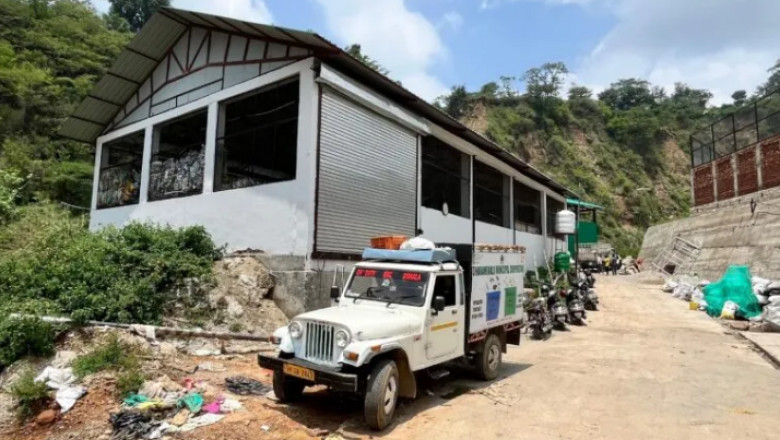views
A Growing Crisis in a Himalayan Town
Nestled amidst the serene beauty of the Himalayas, Dharamshala faces a silent crisis beneath its picturesque facade. The growing influx of residents and tourists, drawn by its cultural and natural allure, has significantly stressed the town’s waste management infrastructure. With an annual waste generation that reflects the national crisis—India produces an estimated 62 million metric tons of municipal solid waste each year, of which less than 60% is collected—Dharamshala’s challenges are amplified by its unique setting.
The Dharamshala Planning Area Development Plan 2035 highlights a 3% annual population increase, compounded by 2.5 million tourists visiting Kangra annually. This rapid growth has brought the issues of waste management and recycling into sharper focus. The waste generated from this influx overwhelms the region, exacerbating pollution, greenhouse gas emissions, and waste-wildlife conflict. Legacy waste, an accumulation of decades of unmanaged disposal, looms large. According to the Dharamshala Municipal Corporation (DMC), over 50,000 metric tons of such waste form towering garbage heaps, releasing methane and other greenhouse gases while threatening biodiversity. Open dumping and burning have become common yet hazardous responses to the crisis, further highlighting the need for effective waste management solutions.
MRF: A Beacon of Hope for Dharamshala
In the face of this grim reality, Dharamshala’s Material Recovery Facility (MRF), managed by Waste Warriors, emerges as a beacon of hope. Since Waste Warriors began their operations, they have relentlessly worked to address the waste crisis in Dharamshala, and the MRF has become a cornerstone of these efforts. The facility represents a model of sustainable waste management and recycling, showcasing how a systematic approach can transform a town’s waste challenges into opportunities.
The MRF, spanning 300 square meters, processes waste from 14 municipal wards, handling 1.5 to 2 metric tons daily. It stands as a symbol of efficiency and sustainability, not only addressing the town’s immediate waste challenges but also setting an example for other regions in India. A significant focus of the facility is sending the waste ahead for plastic recycling, which plays a crucial role in reducing environmental degradation and landfill overflow.
Meticulous Waste Segregation and Climate Action
A critical aspect of the MRF’s success lies in its meticulous segregation process. Plastic waste, a significant contributor to environmental degradation, is sorted into 18 to 19 categories. This careful segregation maximizes plastic recycling potential and ensures that as much waste as possible is diverted from landfills. Over the past year alone, the MRF has diverted 442.6 metric tons of waste from landfills, preventing the emission of 30.98 metric tons of carbon dioxide. These numbers underscore the facility’s effectiveness as a leader in waste management solutions and climate action.
Plastic waste, if left unmanaged, can persist in the environment for centuries, causing significant harm to ecosystems. By ensuring that plastic waste is processed efficiently and reused wherever possible, the MRF not only minimizes pollution but also contributes to the circular economy.

Dignified Livelihoods for Green Workers
At the heart of the MRF’s operations are the people who work tirelessly to process the town’s waste—the green workers. Once informal waste pickers working in unsafe and unstable conditions, these individuals now have dignified livelihoods and safer working environments.
The facility has created 8,443 days of employment in the past year alone, offering stability and respect to those who play an indispensable role in waste management and recycling. By involving these workers in activities like waste segregation, the MRF empowers them to be part of the solution while fostering a sustainable waste economy.

MRF: An Education Hub Inspiring Change
Beyond waste processing, the MRF serves as an education hub, inspiring visitors and locals alike to rethink their relationship with waste. Over the past year, the facility has welcomed 515 visitors, including students, tourists, and community members from across the country. Through guided tours, visitors learn about waste management solutions, plastic recycling, and the importance of responsible waste disposal.
These interactions highlight the potential of small, everyday actions in managing waste.
Sustaining a Vision for the Future
The achievements of the Dharamshala MRF are undeniably significant, but the journey toward a sustainable future is far from over. The facility’s success underscores the importance of collective action in addressing the waste crisis. Every individual, whether a local resident or a visiting tourist, has a role to play. Proper segregation of waste at the source, minimizing plastic waste generation, and supporting initiatives like waste management and recycling are small yet powerful steps toward change. These actions, when multiplied across communities, can significantly reduce the burden on waste management systems and help preserve the environment.






















Comments
0 comment